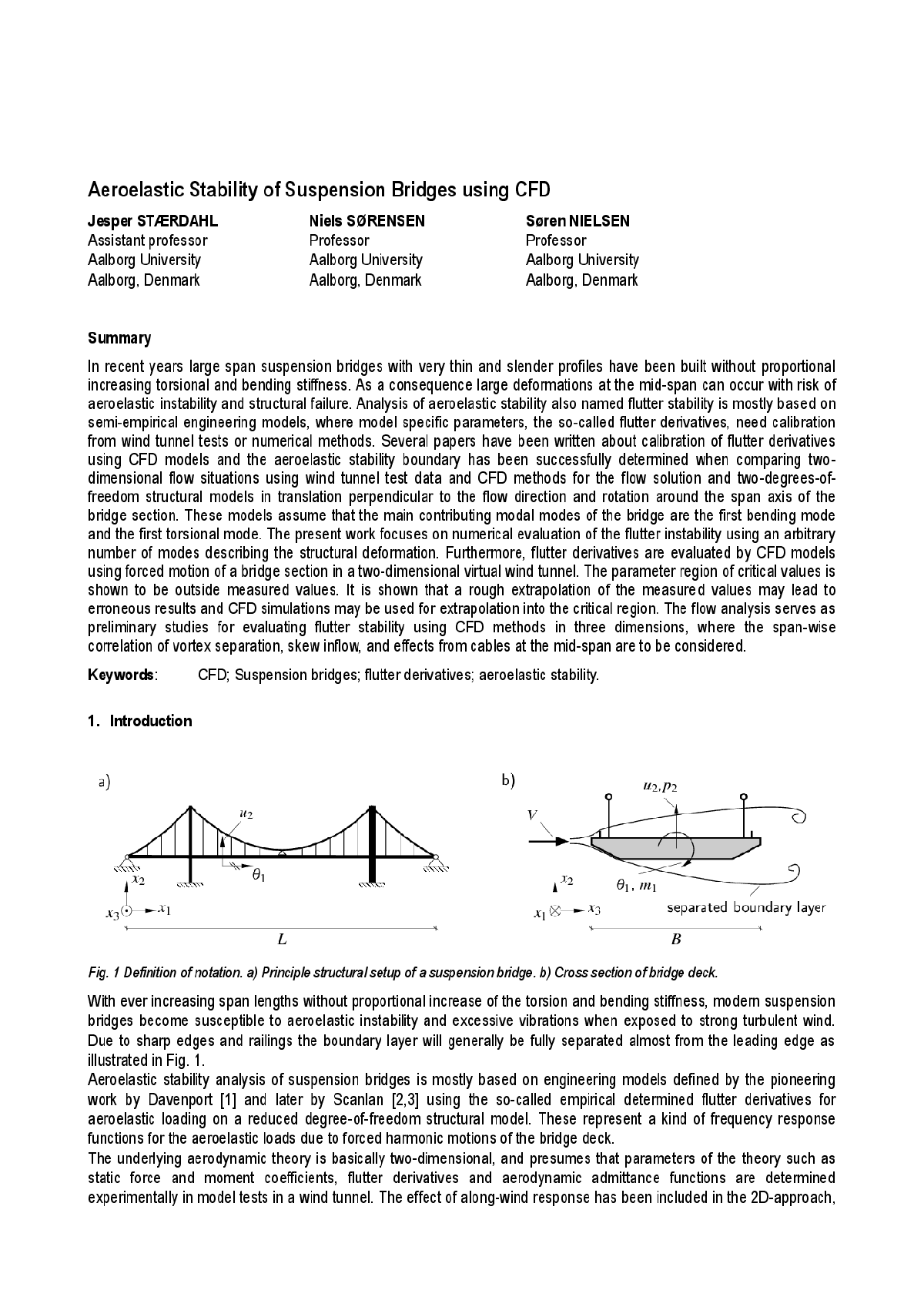
As a consequence large deformations at the mid-span can occur with risk of aeroelastic instability and structural failure. Analysis of aeroelastic stability also named flutter stability is mostly based on semi-empirical engineering models, where model specific parameters, the so-called flutter derivatives, need calibration from wind tunnel tests or numerical methods. Several papers have been written about calibration of flutter derivatives using CFD models and the aeroelastic stability boundary has been successfully determined when comparing two-dimensional flow situations using wind tunnel test data and CFD methods for the flow solution and two-degrees-of-freedom structural models in translation perpendicular to the flow direction and rotation around the span axis of the bridge section.

悬索桥气弹性稳定CFD分析(英文)-图一

悬索桥气弹性稳定CFD分析(英文)-图二

悬索桥气弹性稳定CFD分析(英文)-图三

悬索桥气弹性稳定CFD分析(英文)-图四

悬索桥气弹性稳定CFD分析(英文)-图五



桥梁概况: 1、本桥梁为人行悬索桥,净宽2.0米,建筑总宽度2.3m; 2、桥梁跨径为90米,矢跨比为1/12; 3、桥面预拱度为0.8m,并设50cm高的加劲桁架; 4、锚碇及索塔基础在基坑开挖时应进行地基验槽工作,索塔基底应进入弱风化基岩不少6.0m。桥面施工过程中面板木材顺纹方向必须为横桥向,使用前应用沥青浸泡进行防腐处理,共包含CAD设计图14张。






























桥梁概况: 1、该桥为人行吊桥,矢跨比为:1/10,预拱度为30厘米,人群荷载为3.5KN/平方米。 2、该吊桥设置抗风索,抗风索按斜拉固定设计。 3、桥梁跨径为70米,桥面净宽2米。 ...... 设计于2005年,共8张CAD设计图。



2)本桥采用无支架缆索吊装施工斜拉扣挂悬拼施工工艺,拟采用两套主索系统抬吊,其中每一套主索为7直径50密封钢丝绳,每套设计吊重为65吨,因此总设计吊重为130吨。 3)拱肋扣索拟采用钢铰线,主扣塔均采用N型万能杆件拼装而成. 4)两岸主地锚、扣地锚均采用重力式地锚。其中主地锚位桥轴线上、扣地锚位于拱轴线上。 5)钢管拱肋拟在工厂加工制作,然后通过船运至索道下或陆上平板车运至塔架前起吊就位,横梁及车道板拟于现场预制再装上平移平车横移到相应的位置,然后再通缆索系统起吊运输。 6)主塔位于2#墩边的地面上、中塔位于9#墩顶、萧山岸主塔位于16#墩边的地面上。

